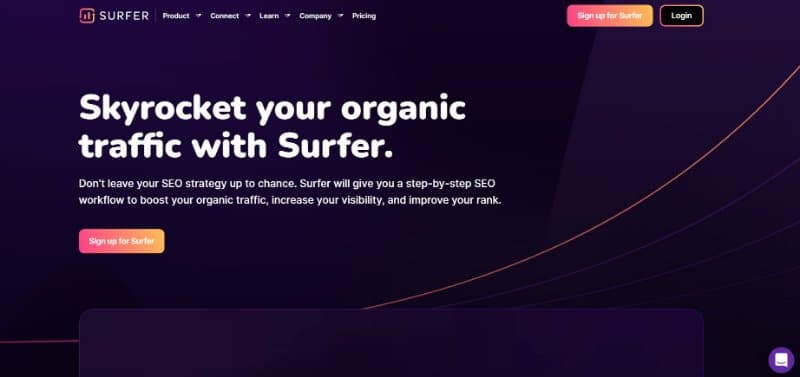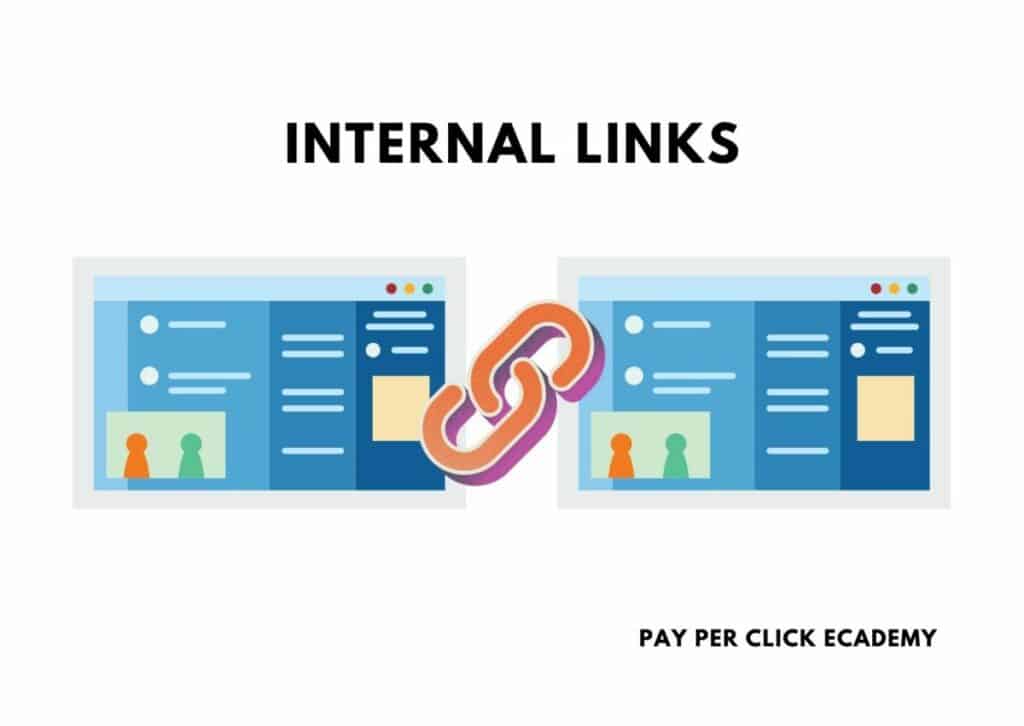In digital marketing, the significance of SEO (Search Engine Optimization) can hardly be overstated. It’s the backbone of modern content marketing strategy, pivotal in enhancing a website’s visibility and driving organic traffic. Central to this endeavor is the use of sophisticated SEO management tools. These tools are not just about tracking keywords or monitoring rankings; they are comprehensive platforms that streamline and optimize the entire SEO process.
Among the various tools available, ClickUp has emerged as a notable choice for professionals aiming to bolster their SEO efforts. This tool transcends the conventional boundaries of SEO software, offering a versatile suite of features that cater to diverse needs within the SEO spectrum. From project management to data analysis, ClickUp provides a unified interface that simplifies complex SEO tasks.
One of the primary advantages of using a tool like ClickUp is its ability to offer a bird’s-eye view of SEO campaigns. It allows users to track the progress of various projects, monitor deadlines, and ensure that every aspect of the SEO strategy is aligned with the overall marketing goals. Moreover, ClickUp’s customizable features enable users to tailor the tool according to their specific requirements, enhancing efficiency and productivity.
The Essence of SEO: Beyond Search Rankings

SEO, often perceived primarily as a tool for improving search rankings, encompasses much more. It’s a multifaceted discipline that enhances the overall quality of a website’s content and user experience. This expanded view of SEO underlines its critical role in driving traffic and engaging and retaining visitors.
The core of effective SEO lies in understanding and catering new content to the audience’s needs. It’s about creating content that is keyword-rich but also informative, engaging, and valuable to the reader. This approach goes hand in hand with the primary objective of search engines: to provide users with the most often relevant information and high-quality content in response to their queries. By aligning content with these principles, SEO helps build trust and authority, which is essential for long-term digital success.
Moreover, up to date, SEO’s role in enhancing user experience cannot be understated. From improving website navigation to ensuring mobile-friendliness and fast loading times, SEO techniques contribute significantly to making a website more user-friendly. A well-optimized website ranks higher and provides a more enjoyable and accessible experience for its visitors, which is key to increasing engagement and conversion rates.
Another vital aspect of SEO is its ability to make content more discoverable. Through strategic keyword placement, meta-tag optimization, and other on-page SEO tactics, content becomes more accessible to users searching for relevant topics. This increased visibility is crucial in a digital landscape where the competition for user attention is intense.
Furthermore, SEO is not a static process; it requires continuous monitoring of keyword research, analysis, and adjustments. Search engine algorithms and user behaviors and preferences are constantly evolving. Staying abreast of these changes and adapting strategies accordingly is essential for maintaining and improving search rankings more traffic, and user engagement.
SEO is a comprehensive strategy that goes beyond pursuing higher search rankings. It’s about crafting a superior user experience, producing quality content, and ensuring that a website meets the dynamic needs of its audience. By embracing this holistic approach, businesses can leverage SEO to enhance their online presence and forge stronger connections with their audience.
Key Strategies in SERP Analysis and Keyword Optimization
Understanding the nuances of Search Engine Results Pages (SERPs) and implementing effective keyword optimization are pivotal components of a successful SEO strategy. These elements work in tandem to enhance a website’s visibility and relevance in search engine queries.
SERP Analysis: The Foundation for Strategic SEO

SERP analysis involves examining the search results for specific keywords to understand what type of content ranks well and why. This analysis provides valuable insights into the search intent behind keywords and content characteristics that resonate with the target audience. SEO professionals can identify trends, commonalities, and unique elements contributing to high rankings by analyzing top-performing web pages.
Key aspects of SERP analysis include examining the structure and format of content, the presence of rich snippets related keywords, internal and external links used, and the type of media used. It also involves understanding the user intent behind search queries – whether informational, navigational, or transactional. This understanding enables the creation of content that ranks well and satisfies user queries effectively.
Keyword Optimization: Beyond the Basics

Keyword optimization is not just about including relevant keywords in the content. It’s a more nuanced process that involves selecting the right keywords based on search volume, competition, and relevance to the content and audience. The concept of the ‘parent’ keyword plays a crucial role here, the target keyword serving as the primary focus around which the content is structured.
Effective keyword optimization also involves balancing high-volume and long-tail keywords, often with lower competition and higher conversion rates. Incorporating these keywords naturally within your website’s content update, including titles, headings, and meta descriptions, is essential for search engine algorithms and user readability.
Moreover, keyword optimization extends to understanding the semantic relationships between words and phrases. Utilizing synonyms and related terms can enhance content relevance without using exact keywords, leading to keyword stuffing – a practice penalized by search engines.
Incorporating these strategies in SERP analysis and keyword optimization leads to creating content optimized for search engines that deeply resonates with the content audit’s intended audience. The content audit’ goal is to provide valuable, relevant, and engaging content that meets the users and potential customers’ needs and preferences.
User Intent and Search Funnel in SEO Planning
In the intricate landscape of SEO, appreciating the nuances of user intent and the search funnel is fundamental to crafting a full strategy for updating content that resonates with the target audience at various stages of their journey. Understanding these elements enables the creation of tailored content that addresses specific user needs, enhancing engagement and conversion rates.
Decoding User Intent for Targeted Content

User intent refers to the underlying purpose or goal of a user’s search query. It is broadly categorized into informational, navigational, and transactional intents. Recognizing the intent behind search queries is critical in developing content that aligns with what users are seeking. For instance, informational intent queries require in-depth, educative content, while transactional intent queries are best met with more direct, action-driven content.
This alignment is not just about updating content to meet user expectations; it’s about providing a seamless and relevant experience that guides users through their journey, from gathering information to deciding. It also significantly improves organic search visibility, as search engines prioritize content that best satisfies user intent.
Navigating the Search Funnel: A Strategic Approach

The search funnel represents the different stages a user goes through in their path to conversion, starting from awareness and moving towards consideration and decision. Each stage requires a different SEO approach. Early in the funnel, where users seek information, the focus should be on creating awareness and providing value through informative content. As users move down the funnel, the content should gradually shift towards more specific, persuasive, and conversion-oriented material.
Understanding where your target audience lies within this funnel is crucial for determining the type of content to produce and target keywords. For instance, targeting long-tail, specific keywords might be more effective in reaching users in the consideration or decision stages, while broader, more general keywords are suitable for desktop users in the awareness stage.
Integrating user intent with the search funnel stages ensures that SEO efforts are not just about driving traffic but about attracting the right kind of traffic – users who are more likely to engage with the content and take desired actions. This strategic alignment leads to more effective and efficient SEO campaigns, ultimately driving better results.
Implementing SEO Enhancements and Performance Monitoring
Effectively implementing SEO enhancements and meticulously monitoring their performance are crucial steps in ensuring the success of an SEO strategy. This process requires a well-considered approach, encompassing both the deployment of SEO tactics and the ongoing evaluation of their impact on website traffic.
Deploying SEO Enhancements with Precision

The implementation phase of SEO involves applying various optimization techniques to enhance the website content’s visibility and relevance. This may include refining keywords, improving meta tags, optimizing website structure, and enhancing user experience aspects like site speed and mobile responsiveness. Each element plays a vital role in how search engines evaluate and rank website content.
A critical aspect of this phase is ensuring that enhancements are made with precision and attention to detail. This means not only incorporating SEO best practices entirely new posts and content revisions but also tailoring them to fit the unique needs and context of the content. It involves a delicate balance between making necessary improvements and maintaining the authenticity and originality of the existing content itself.
The Role of Performance Metrics in SEO

Monitoring their performance becomes imperative once SEO enhancements are implemented to old content. This involves tracking a variety of metrics to assess the effectiveness of the post’s performance SEO strategy. Key performance indicators (KPIs) such as organic traffic, search engine rankings, click-through rates, bounce rates, and conversion rates provide insights into how well the content resonates with the target audience and how it performs in search results.
Regular monitoring allows for the identification of areas where the website updates SEO strategy is succeeding and areas where it may need adjustment. For instance, a decline in organic search traffic or a lower-than-expected ranking for blog post using certain keywords can signal the need for further optimization or a shift in strategy.
Additionally, SEO is not a set-and-forget process; it requires continuous adaptation to changing search engine algorithms, user behaviors, and industry trends. By actively monitoring performance metrics, SEO professionals can make data-driven decisions to refine their strategies, ensuring they remain effective longer relevant over time.
Leveraging SEO Tools for Content Enhancement
In the ever-evolving landscape of SEO, leveraging the right tools is instrumental in enhancing content strategy and overall website performance. Tools such as Google Search Console, Surfer SEO, and Ahrefs offer invaluable insights and functionalities that aid in fine-tuning content to meet SEO objectives effectively.
Google Search Console: A Gateway to SEO Insights

Google Search Console is a fundamental tool in any SEO toolkit. It provides a wealth of data directly from Google, offering insights into how a website performs in google’s search results show. Key features include tracking website traffic, monitoring keyword performance, identifying crawl errors, and understanding the indexation status of web pages. This free tool that is particularly useful for detecting and addressing technical SEO issues and optimizing content for better search visibility.
By regularly analyzing data from Google Search Console, SEO professionals can make informed decisions on which aspects of their website need improvement, be it enhancing the quality of content, resolving technical issues, or optimizing for specific keywords driving traffic.
Surfer SEO and Ahrefs: Comprehensive SEO Analysis

Surfer SEO is renowned for its advanced content analysis capabilities. It helps optimize content by providing detailed guidelines on keyword usage, content structure, and other on-page elements. Surfer SEO’s recommendations are based on analyzing top-ranking pages, ensuring the content aligns with current SEO best practices and market standards.
Ahrefs is another powerful tool, particularly in the realms of keyword research, backlink analysis, and competitive benchmarking. Its ability to uncover competitor strategies and track backlink profiles makes it an indispensable resource for developing robust SEO strategies. Ahrefs’ insights into the most valuable keywords and content gaps present opportunities for enhancing existing content and creating new, highly targeted content.
The Critical Role of Internal Linking

Internal linking, often an overlooked aspect of SEO, is crucial for website structure and user navigation. It involves linking different website pages in a logical way and enhances the user experience. Effective internal linking helps search engines understand the hierarchy and relationship between pages and encourages users to explore the whole update your website more deeply, reducing bounce rates and improving engagement.
Tools like Surfer SEO and Ahrefs can assist in identifying opportunities for internal linking, ensuring that related content across website pages is interconnected. This practice not only aids in spreading link equity outbound links across the website but also enhances the relevancy and authority of individual pages, contributing to better search rankings.
Addressing Challenges in SEO Content Optimization
SEO content optimization is a complex and dynamic field, often presenting a range of challenges even for seasoned professionals. Addressing these challenges effectively is key to maintaining a robust and successful SEO strategy.
Common Challenges in SEO Optimization

One of the primary challenges in SEO is keeping up to date information, with the frequent updates to search engine algorithms. These updates can significantly impact website rankings and necessitate adjustments in SEO strategies. Staying informed about these changes and understanding their implications is vital for ensuring content remains optimized according to the latest guidelines.
Another challenge lies in balancing keyword optimization with content quality. While it’s crucial to include relevant keywords in blog content for SEO purposes, overemphasizing them can lead to poor readability and a negative user experience. The goal is to integrate keywords naturally, ensuring that the content remains informative, engaging, and valuable to the reader.
Moreover, the competitive nature of SEO can be daunting. With numerous websites vying for top rankings in search results, standing out requires not only technical SEO proficiency but also creativity and innovation in content creation.
Practical Approaches to Overcome SEO Challenges

To tackle these challenges, a comprehensive and flexible approach to SEO is essential. This involves continuous learning and staying abreast out of date with the latest SEO trends and best practices. Resources like SEO blogs, webinars, and industry forums can be invaluable for keeping updated.
In terms of content creation, focusing on user intent and delivering value should always be the priority. This approach ensures that content is not only optimized for search engines but fresh content also resonates with the target audience. Utilizing tools like Ahrefs and Surfer SEO can provide insights into user preferences and content gaps, guiding the creation of relevant and impactful content.
Addressing the competitiveness in SEO requires a unique and creative approach to content. This might involve exploring untapped niches, leveraging different content formats (like videos or infographics), or employing innovative storytelling techniques. The aim is to create content that ranks well and captivates and engages the audience.
Collaboration and knowledge-sharing within the SEO community can also provide fresh perspectives and solutions to common challenges. Engaging in SEO forums or joining professional groups can be beneficial for exchanging ideas and strategies.
Practical Tips and Best Practices for Effective SEO
SEO and content strategy are integral to the success of any online presence. To maximize the effectiveness of these strategies, here are practical tips and best practices that both newcomers and seasoned professionals in the field of SEO publish content, can implement.
- Focus on Quality Content: Quality is paramount in SEO. Create content that is not only rich in relevant keywords but also provides real value to the reader. High-quality, engaging content is more likely to earn backlinks, which are crucial for SEO.
- Understand Your Audience: Tailor your content to meet the needs and preferences of your target audience. Use tools like Google Analytics to gain insights into your audience’s behavior and preferences, and adjust your content strategy accordingly.
- Optimize for Mobile: With the increasing use of mobile devices for internet access, ensure your website is mobile-friendly. This includes having a responsive design and fast loading times on mobile devices.
- Utilize Keyword Research Tools: Use tools like Ahrefs and Google Keyword Planner to find relevant, high-volume keywords. Incorporate these keywords naturally in your content, titles, and meta descriptions.
- Monitor Your Competitors: Monitor your competitors’ SEO strategies. Analyze what they are doing well and consider how you can adapt or improve upon their tactics.
- Stay Updated with SEO Trends: SEO is constantly evolving. Stay informed about the latest trends and algorithm updates by following SEO blogs, attending webinars, and participating in relevant forums.
- Use Analytics to Track Performance: Regularly review your SEO performance using tools like Google Analytics and Google Search Console. Analyze metrics such as organic traffic, bounce rate, and conversion rates to understand the impact of your SEO efforts.
- Prioritize User Experience (UX): A positive user experience is crucial for SEO success. Ensure your website is easy to navigate, has a clear structure, and provides valuable content that addresses user queries.
- Implement Internal Linking: Use internal links wisely to guide users to relevant content within your website. This enhances user experience and helps distribute page authority throughout your site.
- Be Patient and Consistent: SEO is a long-term strategy. It takes time to see results, so be patient and consistent in your efforts. Regularly update and refine your content and SEO tactics to stay ahead.

